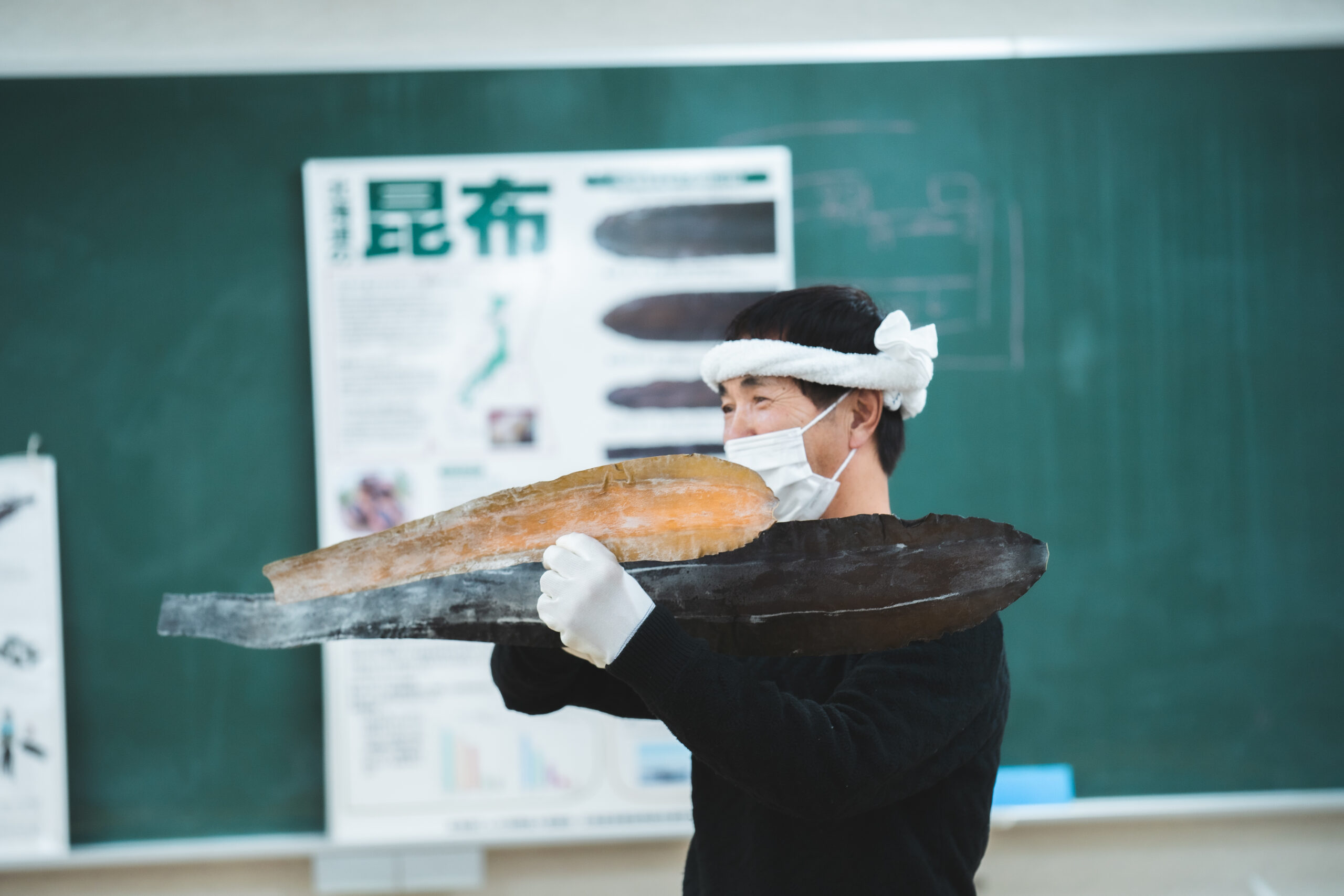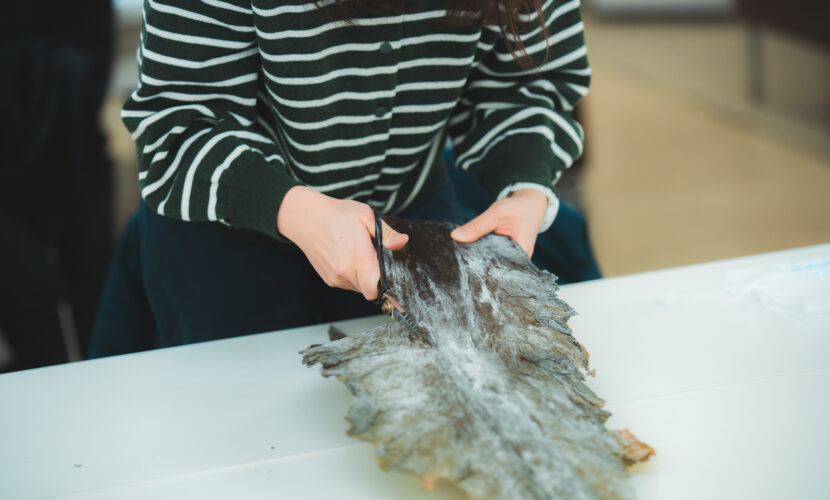
Discovering Rausu - Kelp Cutting Experience
Japanese cuisine is famous for its use of seaweed, and although the categories are diverse - kombu, dried sea kelp - is a pantry staple here. Over 90% of Japan’s kombu comes from the Hokkaido region but a valuable variety - making up just 1-2% of the total - comes from Rausu. Rausu’s kelp is said to have one of the richest tastes out of all the varieties harvested in Japan, and is well known for producing rich and thick dashi - Japanese soup stock.
The Rausu area is the only location where you can harvest kelp around the Shiretoko Peninsula. This narrow fishing area in the Nemuro Strait has incredible natural resources that nurture the umami-rich flavour and lead local fishermen to be incredibly proud of their product. The seas around Rausu have a unique ecosystem, including plankton carried by the drift ice, rich minerals flowing from the melting snow water on the Shiretoko mountain range, and the resulting circulation from local wildlife. It leads to this small stretch of ocean not only producing delicious kombu products, but a wide variety of seafood.
You can find both natural and cultivated kelp in the seas around Rausu, growing in the same area. Both varieties are grown for around two-years in the mineral-rich ocean before harvesting, but cultivated kelp seeds are attached to a rope just below the surface of the water. It takes the full two-years for the ‘baby kelp’ of around 2 cm, to wither once, and then grow back to full ‘adult kelp’ size of close to 2 metres. The kelp can then be dried to make kombu for Japanese dashi or soup stock, or because of its rich taste and soft texture, even eaten as it is.
If you are like me and from a country that doesn’t use a lot of seaweed bases in its everyday meals - England isn’t exactly known for its imaginative food choices - then it’s really interesting to learn more about the varieties and uses of kelp in Japanese cooking. Fishermen in Rausu are so committed to developing the kombu flavour that the harvesting to shipping process literally has a detailed twenty-three steps that are followed locally.
Of course, when you visit Rausu, trying all kinds of seafood for yourself is a huge must. But another great way to appreciate the process up close is by taking a kelp cutting workshop in the town - where you learn the history and preparation methods directly from a local professional. After experiencing some of the cutting process for yourself, you can take the kombu home with you, full of instructions about how to cook and use it for the best taste possible.
I found learning about the twenty-three step process of Rausu’s kelp production absolutely fascinating. It really tells a story of the journey that this delicious ingredient goes on before it reaches you. Every year from late July to August, the two-year old ‘adult kelp’ is harvested using a long tool to twist and pick it from the ocean floor. The kelp is then washed using seawater, and dried on the pebbled beach for 2-3 days. The kelp is moved and its roots are cut before finally being gathered from the beach and taken to the drying room. It is then covered, with the root area left exposed, but goes through a process of being laid out on the beach after sunset, to be gathered again and rolled up prior to being left overnight to bring out the flavour. And at this point, we are only half way through the process. You can see the tools used for each of these steps as part of your workshop, so it really helps to bring the story to life.
The kelp is then stretched and weighted to again mature the flavour - and on a sunny day, once more laid outside to be dried. We then see steps repeated, as the kelp is gathered, covered with the roots exposed, and weighted overnight. As you reach the point in the process where the kombu is cut, this is where you step into the journey for yourself as part of the workshop. Both sides of the kelp are trimmed to shape and you can try your hand at something that seems like it should be simple, but takes some practice to get right. The kombu is then stacked in a lattice pattern to further develop flavour. Finally, the various parts of the kombu are packed and classified - there are over 30 grades of kombu - before being prepared for shipping.
The journey of the Rausu kelp is filled with history, care and the flavour of the region. It is obvious that the local fishermen see this harvest as precious, as they carefully follow steps to ensure that the flavours develop perfectly for consumption. It’s the exactness of the steps that amazes me. The kelp is dried - to just the right amount. The kelp is moistened - to exactly the correct level. The kelp is stretched - carefully, one piece at a time. There is a deliberateness and something unhurried and lovely about every step taken in the preparation. Rausu kelp is said to have one the highest glutamic acid contents from a variety of seaweed, and this is nurtured thanks to the dozens of processes and maturing done by the fishermen themselves. It makes the food delicious, but it isn’t easy or taken for granted. This is the opposite of the immediate fast food culture that we often fall into. Rausu’s kombu is a rich, nutritious food, slowly and methodically produced, harvested and prepared with care and attentiveness. It isn’t rushed, and there is something so enchanting about seeing the process take place every year in this fishing community.
To finish your workshop, you will have the opportunity to ask any questions about the kelp - how to make the most delicious soup stock being one of the most prominent. Kelp is an important flavour enhancer for Japanese dishes and a vital source of umami. When you take home your freshly cut Rausu kombu, add a few pieces to water or whatever broth you are preparing on the stove, or cold-infuse it by leaving it in water overnight. And enjoy the rich and unique flavours that come from the kelp of the Nemuro Strait to remember your time spent in this precious community.
A kelp cutting workshop in Rausu takes around 1.5 hours and is recommended on your next trip to the area.


